Peavey Cirrus User Manual
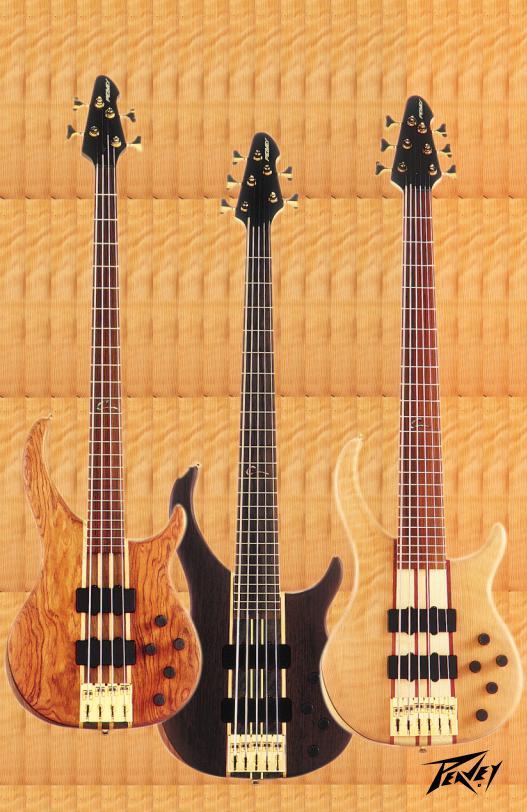
C I R R U S ™ |
O P E R A T I N G G U I D E |

Contents: |
|
Introduction ...................................................... |
3 |
Features ............................................................ |
3 |
Construction ..................................................... |
4 |
Body ....................................................... |
4 |
Neck ....................................................... |
4 |
Pickups .................................................. |
4 |
Bridge .................................................... |
5 |
Battery ................................................... |
5 |
Controls ........................................................... |
5 |
Volume ................................................... |
5 |
Tone Network .......................................... |
5 |
Blend ..................................................... |
6 |
Output Jack ........................................... |
6 |
Adjustments ...................................................... |
6 |
Torsion rod ............................................ |
6 |
Pickups .................................................. |
7 |
String Intonation .................................... |
7 |
Saddle Height ......................................... |
9 |
Care for Your Instrument ................................... |
9 |
Temperature & humidity ........................... |
9 |
Strings ................................................. |
10 |
Finish ................................................... |
10 |
Accessories .......................................... |
10 |
Español ........................................................... |
12 |
Français .......................................................... |
20 |
Deutsch .......................................................... |
28 |
Warranty ........................................................ |
36 |
2
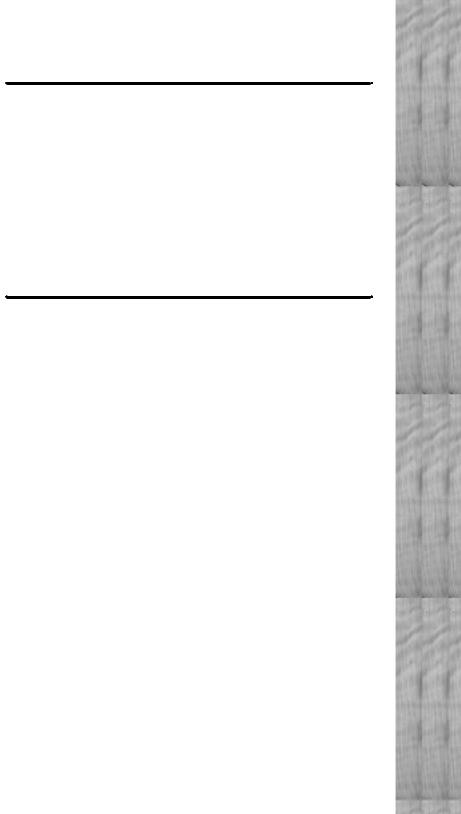
Introduction
Thank you for buying the Peavey Cirrus™ bass. This bass was built by the most skilled craftsmen and made from the finest materials available. As with all of our musical equipment, we have built our bass guitars using a combination of leading edge technology and traditional handcrafted methods. Ask your Peavey dealer for a full list of other Peavey musical equipment and accessories.
Cirrus™ Features
•Five-bolt on neck and body construction
•Walnut neck with wedge fingerboard (graphic reinforced)
•12" radius on 4 string; with 24 fret and 15" radius on 5 with 24 frets 15" radius on 5 and 17" radius 6 string
•35" scale length; 24 frets
•Tilt headstock
•Hipshot reduced mass “mini” bass machine heads
•Two internally active VFL™ pickups
•On-board active 3-band EQ with bass/variable/mid/treble boost and cut (10 dB)
•Low impedance output (18 volt powered)
•All satin gold finished hardware
•Fully shielded electronics
•Individual fingerstyle bridge system (string thru or deop slot with (Patented Dual Compression Tech) (three-way adjustable)
•Graphtech™ topnut
3
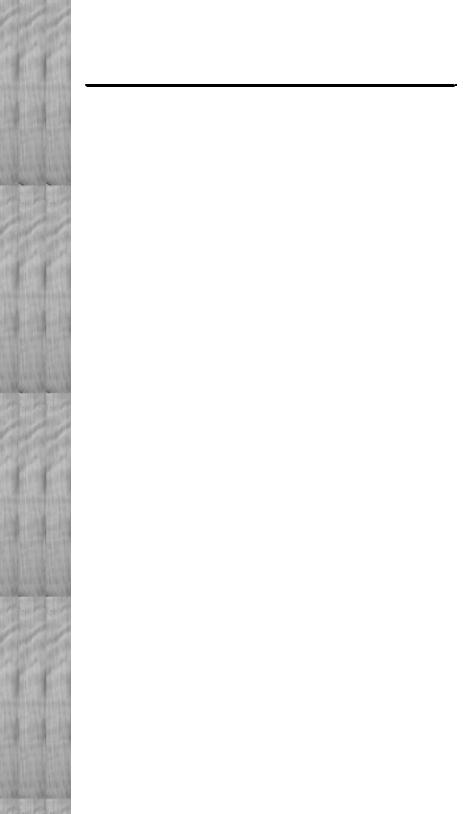
Construction
Body
The body of this instrument is offered in two versions of the finest woods available in a three piece grain matched Mahogany or a Walnut with Bubinga Top. The deep double cutaway design provides unimpelded access to the highest fret while the extended upper horn balances the instrument, thereby avoiding the need to support the instrument with the left hand. The Cirrus features our hand-rubbed oil/ultra satin finished.
Neck
The neck is available in Walnut with a wedge fingerboard (Graphite Reinforced) both 4 and 5 string models are equipped with a two away adjustable steel Torsion Rod. A 12" radius; 24" fret and 34" scale. Fingerboard on 4 string model, 15" radius; 24 fret and 35" scale fingerboard on 5 string model.
Pickups
Each Cirrus instrument comes equipped with two internally active VFL™ pickups. The low impedance output increases the amount of signal-to-noise and produces a brilliantly strong signal over a wide frequency spectrum. The sensitivity level of each pickup may be adjusted by raising or lowering the pickup with height adjustment screws. Raising the pickup closer to the strings will increase sensitivity and lowering the pickup (away from the strings) will decrease the sensitivity.
4
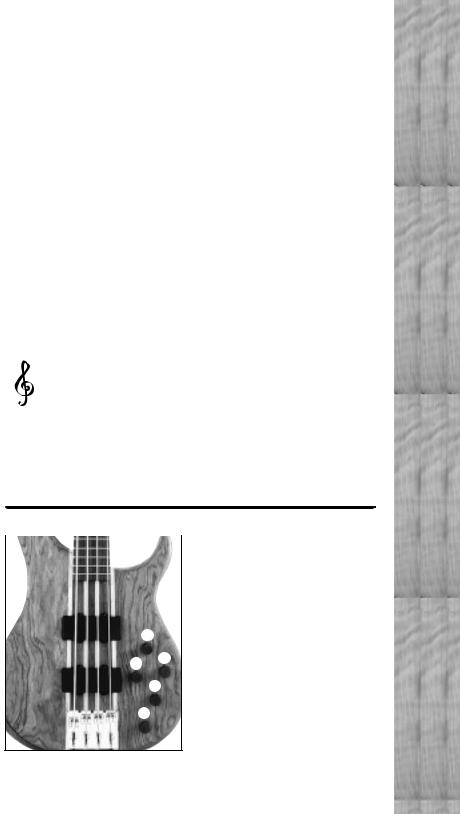
Bridge System
The bridge system of this instrument is satin gold finished individual fingerstyle (string thru or drop slot) three way adjustable, with (Patented Dual Compression Tech). The individual saddle tracks adjust to determine both string height and intonation. Solidly anchored to the body (The Patented Dual Compression System) provided maximum punch, sustain, and string stability during the heaviest of playing.
Battery
The internal preamp places the Cirrus above other bass guitars of its type. It does, however, require two 9-volt batteries to do this. They are accessible by removing the battery cover plate from the back of the instrument.
Note Heavy-duty or alkaline batteries are recommended for reliability and longest
battery life. Low battery voltage will result in “fuzzy” or distorted sound, especially with higher tone and volume settings.
Controls
|
Volume |
|
|
|
The volume knob (1) controls |
|
the total signal level from the |
|
magnetic pickups and the pre- |
|
amp to the output jack. Refer |
1 |
to Millenium |
|
5 2 Tone Network
3The tone network utilized is of the active 3-band EQ type. Each control [Low (2), Mid (3) and High (4)] offers 10 dB of boost (clockwise - CW) or
cut (counterclockwise - CCW). |
5 |
|

Blend
The blend control (5) is offered for a wider variety of sounds than available from conventional pickup selector switches. It may be varied from the neck pickup (full clockwise - CW) or any blend in-between.
Output Jack
The output jack is a genuine Switchcraft®* 1/4" phone jack which accepts standard guitar cables. (We recommend high-quality Peavey shielded instrument cables).
* Switchcraft is a registered trademark of Switchcraft, Inc.
Adjustments
Your instrument has been carefully adjusted at the Peavey factory for accurate intonation and playing ease. However, your playing style and requirements may necessitate additional adjustments. These should be made by your authorized Peavey dealer, but with a little care and by closely adhering to the following
instructions, you may attempt these adjustments yourself.
Please read the instructions thoroughly before attempting any adjustments.
Torsion Rod
The neck is equipped with an a two way steel torsion rod neck, should neck adjustments be desired. While the neck should need few adjustments, neck relief (string clearance over fingerboard) can be tailored to your particular playing style or string gauge. Adjustments can be made by inserting the supplied Allen wrench into the adjustment
6

bullet located in the access slot in top of the peghead. Rotating clockwise will tighten the rod, thus decreasing the amount of relief (underbow). Rotating counterclockwise will loosen the rod, thus increasing the amount of relief (underbow) in the neck. Adjustments should be made in small increments of 1/4 turn or less. Overtightening can damage the rod, thus voiding the warranty. If you are unfamiliar with making this type of adjustment, we recommend that you contact your local Peavey dealer for assistance.
Pickups
The sensitivity level of the magnetic pickups can be adjusted by raising or lowering each pickup with its height-adjusting screws. Raising the pickups closer to the strings will increase the output and sensitivity. Lowering the pickups away from the strings will decrease output and sensitivity. How you adjust the height of your pickups will greatly affect your tone and output levels. Experiment with different combinations until you get the sound you want. You’ll be surprised at how much tonal variance can be achieved with a simple pickup adjustment.
String Intonation
Accurate string intonation settings ensure that your instrument will play in tune at any point on the neck. The proper adjustments will maximize the accuracy of individual notes up and down the neck.
Intonation is set by comparing the pitch of an open string to the pitch of the same string when played one octave higher at the 12th fret. The actual “vibrating length” of that string is varied until the notes are both at the right pitch. The “vibrating length” of the string is altered by adjusting the individual saddles either forward or backward‚ depending on whether the fretted note is sharper or flatter in pitch than the open note.
7

Note |
This process should always be performed with |
|
new strings. Intonation problems are often the |
|
result of worn strings. It is often difficult for the |
untrained ear to determine when the open note and the fretted note are at precisely the same pitch. Some players find that comparing the 12th fret harmonic of the string (rather than the open note) to the fretted note is much easier. A harmonic is played by plucking the string with the right hand while touching the string with the left index finger (as lightly as possible) directly above the 12th fret. The left index finger is drawn away as quickly as possible after the string is plucked‚ producing a “chime” effect. This chimed note is then compared to the fretted note. For greater ease and accuracy‚ we recommend one of the many types of electronic guitar tuners that are available from most music stores.
1. Tune the instrument
to standard (A-440) pitch.
2. Hold the instrument in
a normal playing position or place it on a clean, flat surface so that only the body is in contact with the work surface. Any
pressure on the neck will affect intonation settings.
3.Play the first string open and compare it to the pitch of the same string when it is played at the twelfth fret. These notes should sound the same (actually‚ there is an octave difference).
4.Using a Phillips head screwdriver‚ adjust the string saddle so that both the fretted and open notes are the same. If the fretted note is sharper than the open note‚ the vibrating length of the string must be increased. Move the bridge saddle to the rear— away from the pickups. If the fretted note is flat‚ the vibrating length must be shortened. Move the bridge saddle forward—toward the pickups—to shorten the length.
8

Note |
It will often be necessary to retune the open |
|
string to standard pitch after the bridge |
|
position is altered. |
5.Repeat steps 4 and 5 for the remaining strings.
6.Repeat steps 1–5 as necessary until the intonation of all the strings is accurately adjusted.
Saddle Height
This instrument features individual bridge saddles. Individual string saddles can be adjusted to follow the curvature of the neck to optimize string/fret distance. Use the supplied Allen wrench to make the adjustment for each string.
Note |
All instrument adjustments interact |
|
closely with string intonation. These |
|
adjustments must be completed before |
any attempt is made to set string intonation at the bridge. If you are unfamiliar with this type of adjustment‚ we strongly recommend that this setting be performed by your authorized Peavey dealer.
Care for your instrument
This is a high-quality musical instrument constructed from the finest materials‚ using the most up-to-date production methods. With reasonable care‚ it should provide many years of service and outstanding playability.
Temperature and Humidity
It is important to protect your instrument from any extreme or sudden changes in temperature or humidity. You should store the instrument in its case when not using it.
9
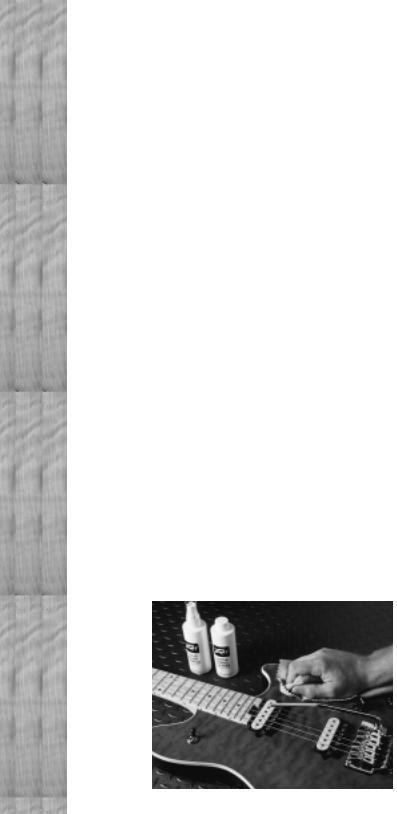
Strings
Your instrument comes from the factory with highquality Peavey bass strings. String life may be greatly extended by frequent cleaning with Peavey string cleaner. Dirt and perspiration tend to build up on the underside of the strings‚ so it is often necessary to slide a rag between the strings and the fingerboard. Dirt-laden strings cause tuning and intonation problems‚ as well as rust and corrosion.
For optimum performance‚ strings should be changed approximately once a month‚ or after about every twenty-four hours of playing. Some players prefer
to change strings more often.
Finish
Your instrument has a durable polyester/urethane or oil/urethane finish which requires care. Regular cleaning/polishing with a dry, soft cloth and Peavey guitar polish is recommended for the polyester/urethane finish. The oil/urethane finish, however, requires a light application of tung oil or natural finishing oil. Light sanding with 0000 steel wool is recommended for finishing. To complete the job, wipe with a dry, soft cloth.
Accessories
Peavey offers a full line of accessories for your instruments. Cases‚ amplifiers‚ strings‚ polishes‚ straps and more are all available from a Peavey dealer near you.
10

WARNINGS
All amplification accessories, microphones, mixers, etc., must be properly grounded and should be utilized with a 3-wire mains system in order to prevent electrical shock.
Do not come into contact with other electrical apparatus when playing (or touching) your instrument. The metal parts of this instrument are grounded according to proper and accepted industry practice, but it is possible to encounter an electrical shock when coming into contact with another electrical apparatus if it has improper grounding facilities.
Do not use improper or poorly designed guitar straps or other means of support. Possible injury could result if improper, inferior, ill-fitting, or worn out straps are used. The instrument could possibly fall, causing bodily injury or damage to the instrument or associated equipment if the holding devices fail for any reason.
Guitar strings are made from very strong steel alloys and are under considerable tension when tuned to pitch. Exercise extreme care when tuning (especially above concert pitch) or when employing string bending or "popping" playing techniques. The possibility of string breakage and personal injury exists under these conditions.
 Note
Note
The patch cord between the guitar and the amplifier is an extremely important link for optimum performance. A high-quality, wellshielded cord should be used in this application.
11
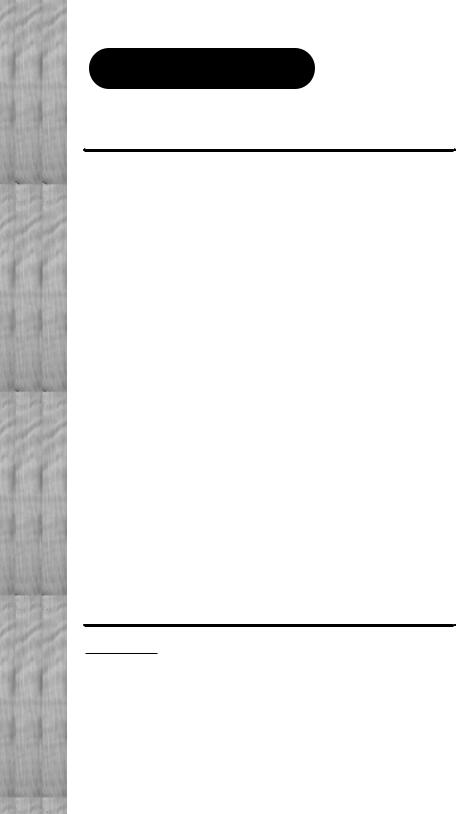
ESPAÑOL
™
madera de nogal
con 4 cuerdas;
interna
refuerzo y corte de
blindados
pistas para
en muchas
de recorte profundo traste más alto, mienel instrumento con la mano izquier-
12
